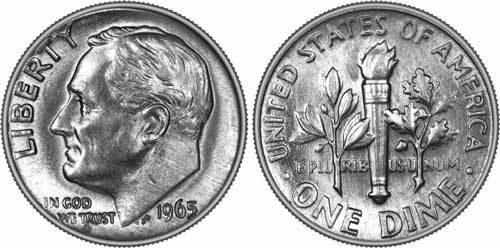How Much Do 2 Million Dimes Weigh: Exploring the Heavy Load
Ever wondered about the weight of your wealth? Imagine having 2 million dimes. While counting them might be daunting, understanding their weight isn’t as complex. Dimes, those small yet valuable pieces of currency, each weigh 2.268 grams. When you multiply that by 2 million, you’re dealing with a significant heft.
To put it into perspective, 2 million dimes collectively weigh about 4,536 kilograms, or roughly 10,000 pounds. That’s equivalent to the weight of two large SUVs! Whether you’re a curious coin collector or just fascinated by the idea of tangible wealth, knowing the weight of such a fortune offers a unique glimpse into the physical aspect of money.
Key Takeaways
- Significant Weight of Dimes: Two million dimes weigh approximately 4,536 kilograms or around 10,000 pounds, equivalent to the weight of two large SUVs.
- Standard Dime Weight: Each dime weighs 2.268 grams, a standard set by the U.S. Mint, ensuring consistency and uniformity in currency.
- Historical Composition Changes: Initially 90% silver, the composition of dimes changed in 1965 to a copper-nickel blend, reflecting historical economic trends.
- Coin Weight and Economy: The substantial weight of bulk dimes influences logistical considerations and transaction efficiency within the economy.
- Impact on Coin Collection: Variations in coin weight due to wear and manufacturing errors affect their authenticity and value in the numismatic community.
Understanding Dime Specifications
Dive into the details of dime specifications to better comprehend their monetary and historical value.

History and Composition of Dimes
Dimes boast a rich history, originating from the Coinage Act of 1792. This Act set the standards for minting U.S. coins, including the iconic dime. Pre-1965 dimes consist of 90% silver and 10% copper, reflecting their historical purity. The Coinage Act of 1965 changed this composition, eliminating silver and adjusting the metal content to a copper-nickel blend. These changes mirrored larger economic trends and resource availability at the time.
Standard Weight of a Dime
A standard dime weighs 2.268 grams, a specification set by the U.S. Mint. This precise weight ensures uniformity across all minted dimes, aiding in commerce and collection. Whether assessing the weight of a single dime or 2 million, this standard weight remains your critical reference point.
Calculating the Weight of 2 Million Dimes
Understanding the weight of 2 million dimes involves a straightforward mathematical process. Each dime has a set weight, and by multiplying this by the number of dimes, you can discover its total weight. This calculation provides insight into the physical manifestation of money.
Mathematical Calculation and Formula
Let’s figure out how much 2 million dimes would weigh, step by step!
First, we need to know how much one dime weighs. According to the U.S. Mint , a single dime weighs 2.268 grams .
Now, let’s multiply the weight of one dime by 2 million (because we want the total weight of 2 million dimes):
Total Weight (in grams) = 2,000,000 × 2.268
This gives us:
Total Weight (in grams) = 4,536,000 grams
That’s a huge number of grams, right? To make it easier to understand, let’s convert grams into pounds. We know that:
1 pound = 453.592 grams
To convert the total grams into pounds, we divide:
Total Weight (in pounds) = 4,536,000 ÷ 453.592
This can be calculated as:
Total Weight (in pounds) ≈ 10,000 pounds
So, the total weight of 2 million dimes is approximately 10,000 pounds , which is the same as five tons !
Imagine you have a ton of dimes – 2 million of them! Let’s find out how much they weigh.
- How much does one dime weigh?
Each dime weighs 2.268 grams . So, we need to figure out how heavy 2 million dimes are. - What happens if we have 2 million dimes?
We take the weight of one dime (2.268 grams) and multiply it by 2,000,000 , because that’s how many dimes we have!2,000,000 × 2.268 = 4,536,000 gramsNow we know that the total weight of all those dimes is 4,536,000 grams . - How do we make this easier to understand?
Grams are a small way to measure weight, so let’s change it into pounds. We know that 453.592 grams equal 1 pound . So, to get pounds, we divide:4,536,000 ÷ 453.592 ≈ 10,000 poundsWow! That means 2 million dimes weigh around 10,000 pounds , or about 5 tons !
And there you have it—2 million dimes weigh as much as 5 huge elephants!
Real-World Comparisons
In real-world terms, 2 million dimes, at about 10,000 pounds, weigh as much as two large SUVs. This unusual comparison illustrates how physical currency doesn’t just represent financial value but also substantial physical weight. Consider the logistical implications: moving such a weight involves transportation methods that require careful planning and handling.
Factors Influencing Coin Weight
Coin weight plays a pivotal role in the functionality and trustworthiness of currency systems. Understanding the variations is essential for collectors and professionals alike.
Variations Due to Wear and Tear
Over time, coins in circulation can experience wear and tear. Consistent handling and movement reduce their weight slightly. This process, though slow, impacts the precise measurement of older coins, especially relevant for appraisers and collectors who focus on value accuracy.
Impact of Manufacturing Differences
Manufacturing differences, although minimized by modern techniques, can sometimes cause slight weight variations. The U.S. Mint adheres strictly to a standard weight of 2.268 grams for dimes. However, in rare cases, minting errors might result in coins that are marginally heavier or lighter than intended. These discrepancies, though uncommon, become critical for authenticity verification and might intrigue numismatics enthusiasts searching for unique minting anomalies.
Weight of Coins in Currency and Trading
Coin weight plays a significant role in both currency systems and trading, influencing transaction efficiency and collection value. Understanding this does more than satisfy curiosity; it aids in appreciating the economic and historical significance of currency.
Importance of Coin Weight in Economy
The weight of coins impacts various aspects of the economy. Heavier coins can complicate storage and transportation, particularly during bulk transactions. For instance, a large sum of dimes—like 2 million—can weigh up to 10,000 pounds, presenting logistical challenges. Coin metrology, the science of measuring coins, is pivotal in ensuring uniformity and trust in transactions. Precise calculations, such as 2,000,000 dimes weighing approximately 4,536,000 grams (or about 5 tons), highlight the economic implications of coin distribution and handling.
Coin Weight and Collection Value
For collectors, a coin’s weight is crucial in determining its authenticity and value. Coins shed weight due to wear, affecting value unless linked to historical significance. Conversely, minting errors—known for weight variations—attract collectors’ interest. Precision scales can measure a coin’s weight with extreme accuracy, helping identify these discrepancies. If a dime’s standard weight deviates even slightly, it could be a rare minting anomaly.
Awareness of these facets enhances your understanding whether you’re a student learning about economic history or a professional in finance. Coin weight is more than a mere physical property; it embodies the precision and complexity of our monetary system.
Conclusion
Exploring the weight of 2 million dimes offers a fascinating glimpse into the tangible aspects of currency. By understanding the specifics of dime composition and historical changes, you gain insight into the evolution of U.S. coinage. The significant weight of these dimes not only highlights their physical presence but also underscores the logistical considerations of handling large sums in coin form. Whether you’re a collector or simply curious about the material side of money, appreciating the intricate details of coin weight enriches your understanding of both economic and historical contexts. This knowledge enhances your appreciation of the complex yet fascinating world of currency.







